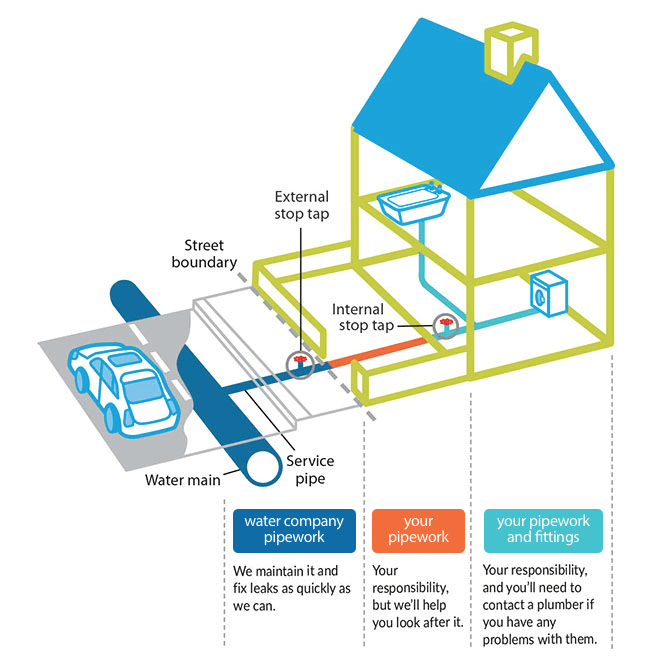Leaking pipes
Getting water to your home
Water is brought to your homes through thousands of kilometres of underground pipes. For various reasons, pipes can leak and some water is lost between the treatment works and your home.
- 8.7 times
- around the equator
Source: Water UK; England and Wales, Apr 2023 – Mar 2024
- 1,202
- Olympic swimming pools per day
Source: Water UK; England and Wales, three year average Apr 2021 - Mar 2024
Leakage
Water is piped under high pressure to your homes through thousands of kilometres of underground pipes. For various reasons, pipes can leak and some water is lost between the treatment works and your home.
Close PanelWater pipes - which do you own?
It is helpful to know which pipes are water companies' responsibility and which ones are yours.

There are many reasons why water pipes leak. Some are old and have worn out through gradual corrosion, and others can get damaged by freezing weather.
Ground movement, such as natural shifts in building foundations, can also put a strain on pipework.
If you spot a leak on the street, the best thing to do is report it to your water company as soon as possible.
In your home, some leaks such as dripping taps are obvious but others can be hidden, for example:
- Behind a poorly plumbed appliance
- In a rarely-seen water tank
- Due to an overflowing toilet cistern
If you think you may have a leak and you are on a water meter, check your meter reading to see if it is rising even when all water appliances are off (remember to wait 30 minutes to allow any cisterns to fill).
If you find a leak in your pipes, contact a WaterSafe certified plumber.
Spotted a leak?
Please contact your local water company. Don’t know who your supplier is? Find out here